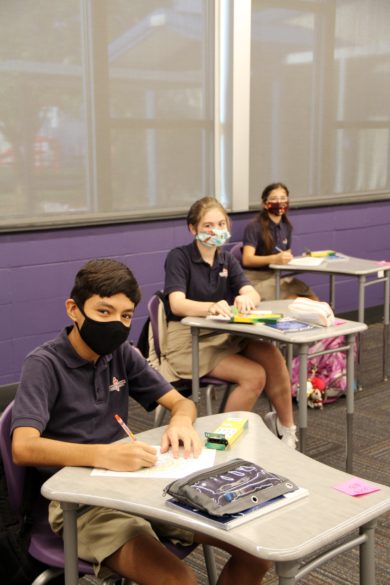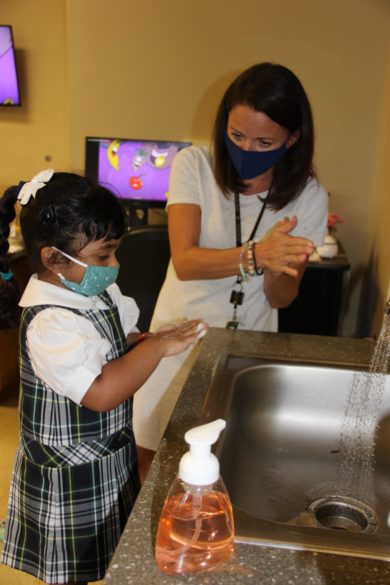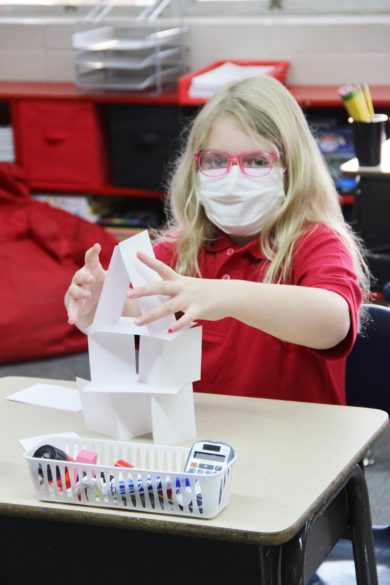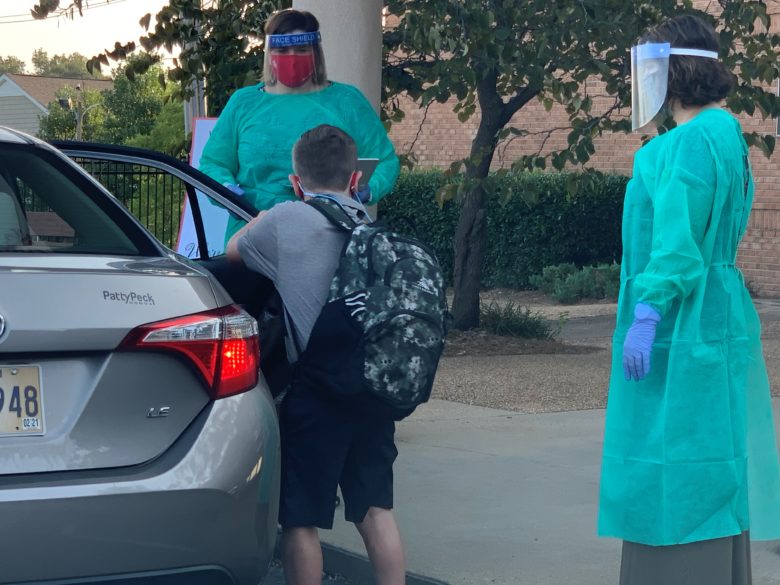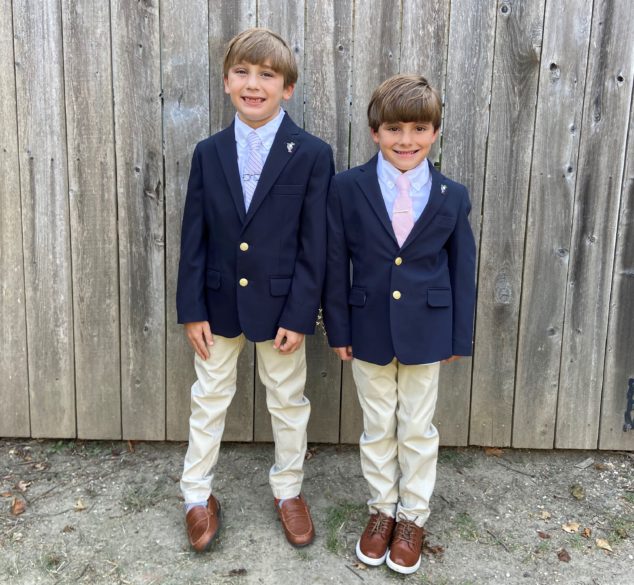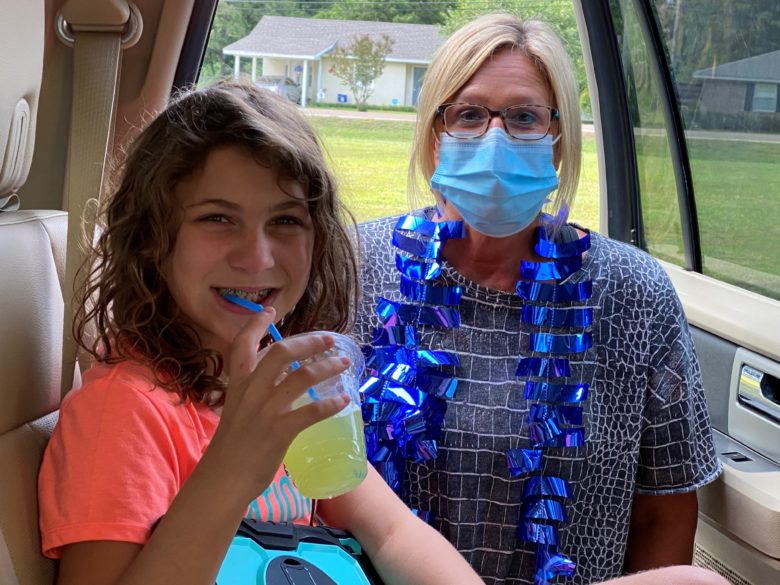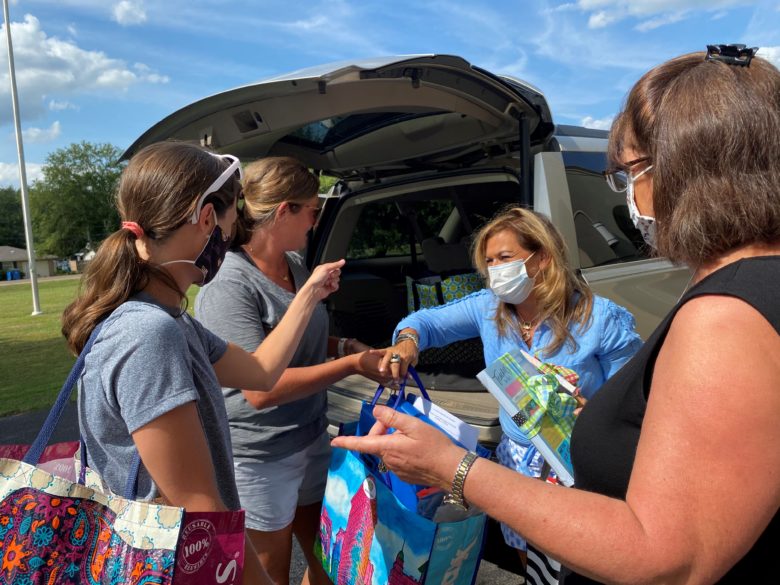JACKSON – Bessie Wilburn was a native of Greenwood, Mississippi, graduating from Broad Street High School. She began coming to the St. Francis Center, meeting members of the Pax Christi Franciscans and the Franciscan Friars. She came to know and respect the work done by this Catholic community under the direction of Father Nathaniel Machesky, OFM and Kate Jordan.
She attended Xavier University in New Orleans, transferred to and graduated from Briar Cliff College in Sioux City, Iowa. She obtained her master’s degree from Delta State College in Cleveland. While a member of the Delta State concert choir, she traveled to England where the choir performed numerous concerts.
In 1957, inspired by the Pax Christi Franciscan community, Wilburn began her process of formation as a member of this group of dedicated women, known in Canon Law as a Pious Union. People who belong to such groups commit themselves to following Christ in a radical way, by living a life of poverty, chastity and obedience. In 1960, Bessie made her first profession as a member of the Pax Christi Franciscans making her a consecrated member of this group.
She spent her years at St. Francis Center serving the people in that area. For many years, she taught at St. Francis school, also teaching music and directing musical plays for the entire school.
Wilburn was the director of St. Francis Center for many years. Her favorite task at the center was offering parties and programs for the senior citizens of Greenwood.
She was a true Franciscan, loving and caring for many stray animals who found their way to her.
Wilburn left this earth and joined the choir of angels on Aug. 4, 2020.
A private Mass was celebrated on Saturday, Aug. 8 at St. Francis of Assisi parish in Greenwood.
Memorial donations may be sent to the Pax Christi Franciscans, 2108 Alta Woods Blvd., Jackson, MS 39204.
Updates
Catholic prayer, meditation app Hallow sees huge increase in popularity
By Ian Alvano
WASHINGTON (CNS) – When the developers of the Catholic meditation app Hallow launched it in 2018, they hoped to attract young Catholics, but what is now the country’s No. 1 Catholic app has a bigger reach than that.
“It started as this focus on young adults but actually we’ve seen a lot more. … Parents and retired folks get really excited about it and start using it,” said Hallow’s CEO and co-founder, Alex Jones.
Hallow – https://hallow.com – has seen a dramatic increase in popularity and getting more and more users each day.

The No. 1 rating is based on “Apple’s algorithm, which they don’t disclose,” Jones told Catholic News Service in a July 21 interview. “It’s based on how many people have reviewed it in the last few weeks, how many people are downloading it, how many have viewed. We started off on the bottom of the list, went to No. 3, then jumped to No. 1 about six months ago.”
Hallow is based out of Chicago even though the company started off in California’s Silicon Valley. Creation of the app is integrated with Jones’ own faith journey. His family raised him as a Catholic, but he strayed from the faith in high school and college. He went to the University of Notre Dame but he was going through a “relatively dark time in life,” he told Catholic News Service.
After he graduated from college, he wanted to figure out what he believed in. One thing that had always fascinated him was meditation. He noticed that whenever he meditated, his mind would be pulled to something spiritual.
He said he’d ask priests, nuns and others in religious life if there was a specific connection between meditation and faith. They told him that indeed there was a connection: It was called prayer.
When he was growing up, Jones said, he only thought of prayer as a way to ask for certain things or that it was just basic memorization of words. He only felt that he was talking to himself and going through the motions.
A priest friend encouraged him to listen more during prayer, Jones said, and he began to study the Catholic faith more and he tried “lectio divina,” a meditative reflection on the Scriptures.
Jones said this process actually led him to tears and eventually brought him back to his faith.
“It was a beautiful combination of this deep sense of peace and love, deeper than any other secular mediation or mindfulness meditation. It was this deep sense of peace combined with this real purpose that calms our head space,” he said.
Jones recalled meditating on the Lord’s Prayer and the word that stuck out to him was “hallow” from the beginning of the prayer: “Our Father who art in heaven, hallowed be thy name.” He knew what hallow meant, to make holy or sacred, but he didn’t know how it pertained to his life. He pondered if he should be helping others grow in holiness.
That’s how the Hallow app came to be.
“If Headspace and Calm can be successful helping people learn secular meditation and (be) done through an app’” he thought, “why can’t the same thing be done and be done better through teaching Catholic contemplative prayer?”
Headspace is an app that teaches you how to meditate; Calm is a leading app for meditation and sleep.
“It’s very important to us that everything on the app is 100% authentically Catholic and in line with church teachings,” Jones told CNS about Hallow.
He said the app’s developers have worked with priests, bishops and theologians to ensure they are conveying Catholic teachings correctly. He added that Hallow is a resource to people of all backgrounds, especially people who have fallen away from the faith. Its primary audience is Catholic, but users of the app include Protestants, Jews and even atheists.
It also is hard to ignore the impact of COVID-19 on Hallow’s popularity. According to Jones, there was a large increase in usage and downloads when Easter came around since everyone was advised to stay at home.
While the pandemic has been terrible and brought so much sadness to people’s lives, with loved ones and friends dying from COVID-19, Jones said, it provides us with an opportunity to work on our spiritual lives from home. The app has a “Family” feature that allows users to connect with family and friends and share prayers, reflections and prayer intentions with them even while being physically separated.
It also has a feature called the “Daily Minute Prayer Challenge.” Users are encouraged to build a habit of prayer by spending at least one minute in guided prayer with Hallow each day.
“The hardest part about praying is just doing it. It’s easy in the seasons of Lent and Advent when it’s top of mind, but over the summer when you’ve got a lot of other things going on,” Jones said, “it’s easy to fall off that. We do a bunch of things. You can set goals on the app. You can add members of your family and friends to the app to hold yourself accountable. You can set daily reminders.”
Hallow, which has over 5,000 five-star reviews, tries to be “an app that helps you disconnect from apps and technology,” according to Jones, which he admitted sounds like a contradiction.
But he explained that while other religious apps have users glued to their screen to read the Bible, Hallow allows its users to press “play,” close their eyes and listen to audio of a prayer.
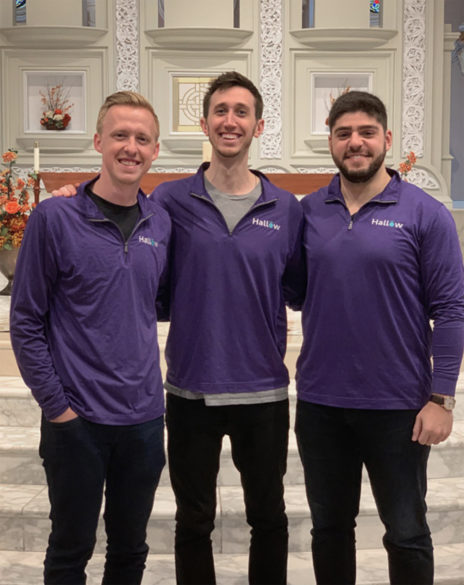
Featured photo . . . Back to School Rainbow
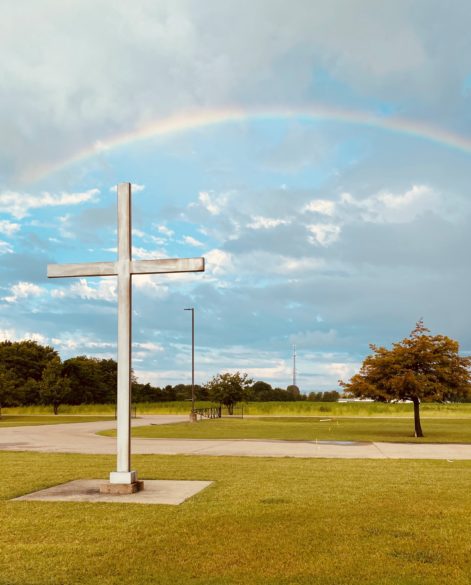
Calendar of events
SPIRITUAL ENRICHMENT
VIRTUAL First Homegrown Harvest Fundraiser, Friday, Oct. 9 at 6:30 p.m. to raise awareness and funds for the seminarian trust. This will be a live online event. You can go to https://one.bidpal.net/homegrownharvest2020 to be a part. You will hear from the six men who are studying for the priesthood, as well as hear a talk from Father Jim Wehner, the President/Rector of Notre Dame Seminary in New Orleans and throughout the evening you will hear from Father Nick Adam, our seminarians and more. Details: Father Nick Adam, Vocation Director (601) 969-4020 or nick.adam@jacksondiocese.org.
VIRTUAL Dominican Sisters of Peace presents “Listening to God’s Call with Open Hearts,” a virtual discernment retreat for single women ages 18-45, Sept. 11-13. This retreat will give single Catholic women an opportunity to meet and talk with Sisters and women in formation, as well as other women who are discerning their own call to religious life. Details: Sister Bea Tiboldi, OP, (614) 400-1255 or BTiboldi@oppeace.org.
JACKSON Catholic Charities’ Journey of Hope postponed. Out of an abundance of caution, Catholic Charities has postponed its Journey of Hope for this year and has been rescheduled for Thursday, Feb. 25, 2021 at 12 p.m. There will be a meet and greet the night before, Wednesday, Feb. 24, 2021 from 6-8 p.m. The luncheon speaker will be Elizabeth Smart, who was abducted in 2002 as a 14-year old from her family’s home and was one of the most followed cases of our time. She was rescued nine months later. Through her traumatic experience, Smart has become an advocate for change relation to child abduction, recovery programs and legislation. She will appear to share her story of perseverance and hope. This inspirational event will raise money for the vital programs of Catholic Charities. Details: Catholic Charities (601) 355-8634.
JACKSON 40 Days for Life kickoff rally, 2903 North State Street, Wednesday, Sept. 23 at 12 p.m. Join in prayer and fasting as they go to the abortion facility to be a public witness for God. There will be no speaker this year, but they are asking that you pray and sing. Details: plm@prolifemississippi.org.
MAGNOLIA St. James Mission, you are invited to embark on a journey towards faith and racial healing sometime in the first week of Sept. via Zoom meetings. It is an opportunity to further and deepen our desire to follow the way of Jesus. This program is not specifically Catholic. It is universal. All are welcome. The program is not about religion; it is about human dignity and respect. If you are interested, please call or email. Details: Chris Ingrassia (301) 266-0433, gracie_eddie@yahoo.com. Website: https://justfaith.org/faith-and-racial-healing/.
PARISH, SCHOOL AND FAMILY EVENTS
HERNANDO Holy Spirit, Weight loss support group meets Tuesdays at 9 a.m. All are welcome to come each week to become healthier and happier. Details: Liz Brown (901) 331-3419.
JACKSON St. Richard, Save the Date, Special Kids Golf Tournament, Thursday, Oct. 8 from 8 a.m. to 5 p.m. at Deerfield Golf Club, Canton. Sponsorships and donation opportunities are available. Details: church office (601) 366-2335 or www.saintrichard.com.
MERIDIAN, Catholic Community of St. Joseph and St. Patrick, Father Augustine leads a novena to the Lady of Our Perpetual Help on the parish’s Facebook page Saturdays at 11 a.m. Details: church office (601) 693-1321.
VICKSBURG St. Mary, Knights of Columbus Drawdown, Sunday, Oct. 11. This event will be a “virtual” drawdown with takeout food. Cost: tickets are $75 each. Details: church office (601) 636-0115.
COVID-19 REMINDER
In person Masses are now open at many parishes within the Diocese of Jackson. Check with your local parish for details and follow guidelines in place for attendance. All over the age of two are required to wear a mask.
The obligation to attend Mass continues to be dispensed by Bishop Joseph R. Kopacz, so if you do not feel safe attending, or have an underlying health condition, or feel sick, please stay home. Be safe and stay vigilant!
Fe se mantiene más fuerte ante el miedo
Por Berta Mexidor y Joanna Puddister King
JACKSON – El 7 de agosto de 2019, al menos cuatro parroquias católicas fueron sacudidas después de que agentes del Servicio de Inmigración y Control de Aduanas de Estados Unidos allanaron plantas procesadoras de pollo en todo el estado y arrestaron a 680 trabajadores indocumentados. El día dejó a muchos niños con miedo y dolor en su primer día de escuela, ya que se quedaron sin un lugar adonde ir con sus familias arrebatadas.
Cuando algunos fueron liberados de la custodia de ICE para cuidar a sus hijos, se estableció una nueva realidad. La pérdida de ingresos, junto con un futuro imprevisible y preguntas sobre cómo sus familias pueden sobrevivir sin sus seres queridos bajo la custodia de ICE.
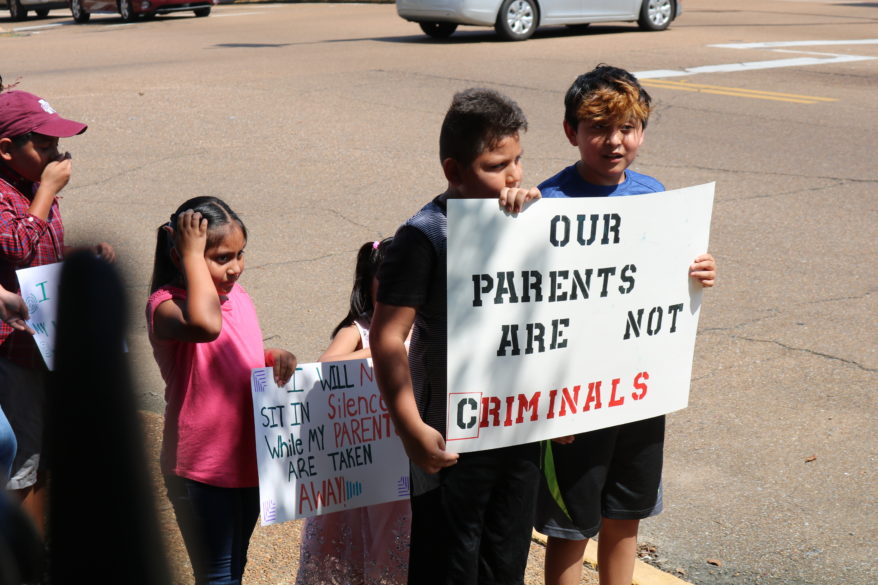
Aproximadamente siete meses después, entre comparecencias ante el tribunal, posible deportación e incertidumbre legal, volvió el dolor para estas comunidades, ahora en forma de una enfermedad que afecta a todos, sin discriminación de estatus legal. Pero para las familias afectadas en Canton, Forest, Morton y Carthage, el miedo al COVID-19 era menor que el miedo a los funcionarios de inmigración.
Cientos se han enfermado; amigos y familiares han muerto debido al COVID-19. Muchos inmigrantes indocumentados están evitando exámenes y visitas a hospitales, a pesar de las promesas de las autoridades de no verificar su estatus legal durante los exámenes médicos.
La situación no se localiza solo en Mississippi, sino también en todo el país. Varias de las familias afectadas por las redadas emigraron a otros estados para evitar otra redada. La membresía de la iglesia también se redujo por esta migración.
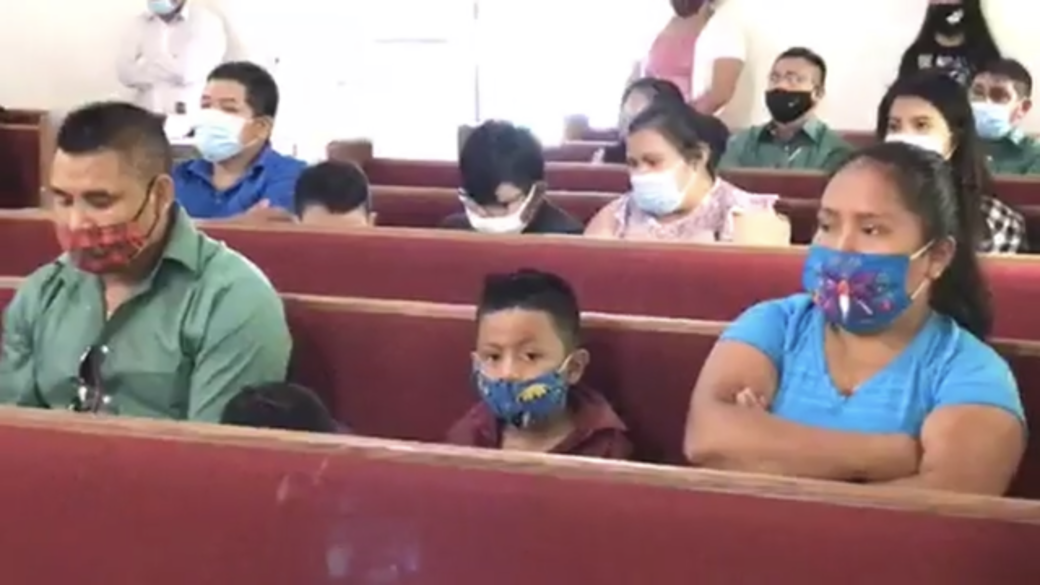
Inmediatamente después de las redadas en agosto pasado, la iglesia se convirtió en un centro humanitario de alimentos, bienes y recursos financieros para pagar el alquiler y los servicios públicos. En ese momento, los inmigrantes notaron que Dios estaba enviando varias manos de ayuda, incluso un Cardenal de Guatemala.
El 7 de noviembre de 2019, el representante Bennie Thompson celebró una audiencia del Congreso, en Tougaloo College en Jackson. Lo acompañaron dos representantes más; así como, líderes estatales, comunitarios y religiosos, incluido el padre Odel Medina, ST de St. Anne Carthage, para interrogar al agente especial de Investigaciones de Seguridad Nacional Jere Miles sobre el presunto mal manejo de la redada masiva de ICE meses antes.
Durante la audiencia, el padre Medina aprovechó la oportunidad para leer la carta de un niño de su parroquia, que se sentía herido y traumatizado a raíz de las redadas.
Poco antes de Navidad, el cardenal Álvaro Ramazzini Imeri de Guatemala, visitó las comunidades parroquiales afectadas con un mensaje de que “Dios nunca los abandona”. Consoló a las familias afectadas por la redada con palabras del Evangelio y las acompañó durante tres días de la temporada de Adviento, participando en “Las Posadas”, una recreación del intento de María y José de encontrar alojamiento antes del nacimiento de Jesús.
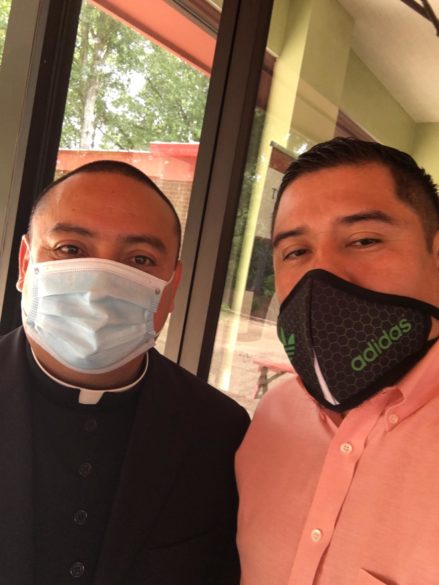
Mientras estaba en Mississippi, el cardenal Ramazzini habló con los medios de comunicación, defendiendo una “política migratoria con rostro humano” y habló de las condiciones económicas que obligan a muchos a abandonar su país de origen y pidió la eliminación de la costumbre de que los inmigrantes sean tratados como criminales. sin tener antecedentes penales.
Durante la visita del cardenal Ramazzini, Catholic Extension, que patrocinó la estancia del cardenal, anunció su Fondo Sagrada Familia, (Holy Family Fund), un programa de ayuda a las familias en los Estados Unidos que dependen económicamente de un padre que ha sido detenido o deportado por motivos de inmigración. A través del fondo, Catholic Extension ha sido fundamental para garantizar el flujo de ayuda que entrega recursos básicos a las iglesias que atienden las necesidades humanitarias y espirituales de las familias en Mississippi afectadas por las redadas de ICE.
La ayuda de Catholic Extension, Catholic Charities y muchos dentro de la comunidad católica ha ayudado a las familias afectadas en las parroquias de las comunidades de Canton, Carthage y Forest-Morton.
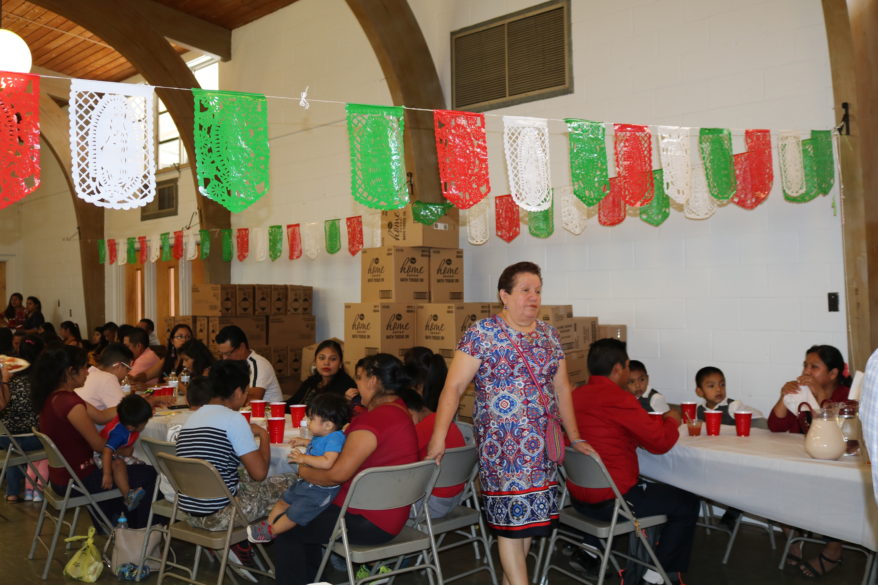
Diócesis tiene línea directa para reportar posibles fraudes
Por Joanna Puddister King
JACKSON – En enero de 2020, la Diócesis de Jackson estableció un sistema de línea directa para que las personas informen posibles fraudes, problemas de cumplimiento, violaciones de la ética y problemas de recursos humanos.
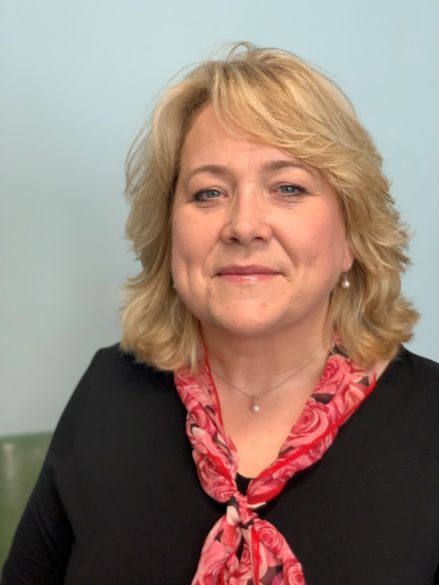
El uso de una línea directa se ha discutido durante varios años en la Conferencia Nacional Diocesana de Administradores Fiscales, a la que asisten miembros de la diócesis. Una línea directa se considera una “mejor práctica”, ya que tener una línea independiente puede ayudar a alertar y reducir la posibilidad de acciones inapropiadas o ilegales.
Carolyn Callahan comenzó a investigar plataformas de línea directa después de presentaciones en la conferencia, incluso antes de ingresar a su función actual como directora de asuntos temporales en la diócesis en mayo de 2019. Anteriormente, actuó como contralora, auditora interna y coordinadora de proyectos especiales para la diócesis, director de finanzas de la escuela St. Joseph en Madison, y como persona de apoyo contable para todas las escuelas católicas.
“Aunque siempre hemos tenido procedimientos para manejar quejas, los eventos de los últimos años nos ayudaron a ver más allá de cualquier posible uso indebido de la línea directa, por lo que nuestros feligreses y empleados tienen una manera confidencial y efectiva de informar problemas”, dice Callahan.
El sistema de línea directa de la diócesis es operado por Lighthouse Services. Durante los últimos 15 años, Lighthouse Services ha mantenido líneas directas de ética, seguridad y fraude y ahora presta servicios a más de 4,100 organizaciones entre los EE. UU. y el extranjero.
Cualquier inquietud relacionada con mala conducta financiera, fraude, problemas de cumplimiento o problemas de recursos humanos dentro de la diócesis puede informarse de forma anónima llamando al número gratuito de la línea directa o archivada en línea. Lighthouse Services presentará y procesará la información reportada.
Inmediatamente después de recibir una queja, Lighthouse Services enviará un correo electrónico a tres destinatarios designados., “Dos son empleados de la cancillería y uno es un sacerdote diocesano que no trabaja para la oficina de la cancillería”, dice Callahan.
“Si uno de los tres destinatarios se menciona en la queja, esa persona no recibe la notificación por correo electrónico y no puede acceder al informe”.
Una vez recibida, los tres destinatarios designados acceden a la queja a través del portal web seguro de Lighthouse Services. Si el denunciante presenta la denuncia de forma anónima, las personas designadas solo ven un número PIN, pero nunca un nombre. La comunicación se produce entre el reportero y las personas designadas a través del portal en línea Lighthouse. Se pueden cargar archivos y otra documentación para su revisión.
“Se produce una discusión y se crea un plan para investigar el reclamo, ya sea internamente o con un investigador externo”, dice Callahan. “Dependiendo de los resultados de la investigación inicial, se notifica al abogado diocesano y / o la policía”. La esperanza de Callahan es que cualquier persona preocupada por el fraude, los problemas de cumplimiento, las violaciones éticas y los problemas de recursos humanos se sienta cómodo sabiendo que tiene una plataforma objetiva y confidencial para presentar una reclamación que será investigada de inmediato.
“Las preguntas formuladas dentro del proceso de presentación nos da la capacidad de conocer y responder a las quejas de manera oportuna y efectiva,” dice Callahan.
Para hacer un informe, visite www.lighthouse-services.com/jacksondiocese o llame sin cargo al 888-830-0004 (inglés) o al 800-216-1288 (español).
El vicario general, el padre Lincoln Dall, que trabaja en estrecha colaboración con Callahan, dice: “La línea directa de Lighthouse es parte de nuestra estrategia general de fortalecer nuestros procedimientos de control y supervisión de los bienes y dones que Dios y su pueblo han confiado a nuestra diócesis, nuestras parroquias, y escuelas. Hemos estado mejorando tales políticas, procedimientos y controles en los últimos dos años y continuamos haciéndolo a través del acuerdo actual que tenemos con el gobierno federal.”
La información de la línea directa se publica regularmente en Mississippi Catholic y al menos trimestralmente en los boletines parroquiales. También se puede encontrar en www.jacksondiocese.org.
Tome Nota
Virgenes y Santos
Dia del Trabajo. Labor Day. Sep. 7
Santa Teresa de Calcuta. Sep. 5
Natividad de la Santísima Virgen María – Virgen de la Caridad del Cobre, Patrona Cuba. Sep 8
San Pedro Claver. Sep. 9
Virgen de Coromoto, Patrona de Venezuela. Sep. 11
San Genaro. Sep. 19
San Pio de Pietrelcina. Sep 23
San Gerónimo. Sep. 30
Convocatoria
Campamento Virtual, para familias, auspiciado por SEPI y Extensión Católica.
Todos los viernes de septiembre y primer viernes de octubre
De 5 pm a 7 p.m.
Mas información, llamar a
Edgar Morales, 601-826-8594 o Johana Mollinedo 601-778-0678
La parroquia de St Therese
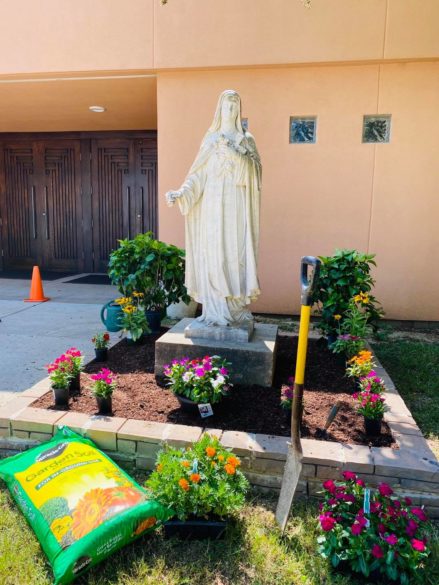
Sacraments
Mississippi Catholic will publish Sacrament pages in upcoming editions.
This means we need 2020 First Communion and Confirmation photos.
Due to COVID-19, we understand there may not be group shots,
so individual pictures are accepted.
email to: editor@jacksondiocese.org
Please include full names, parish, date, name of sacrament celebration and
name of photographer, if possible.
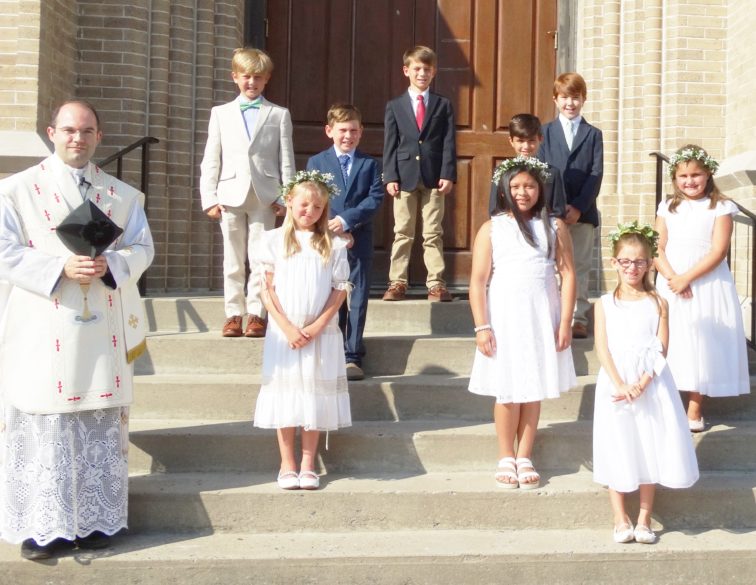
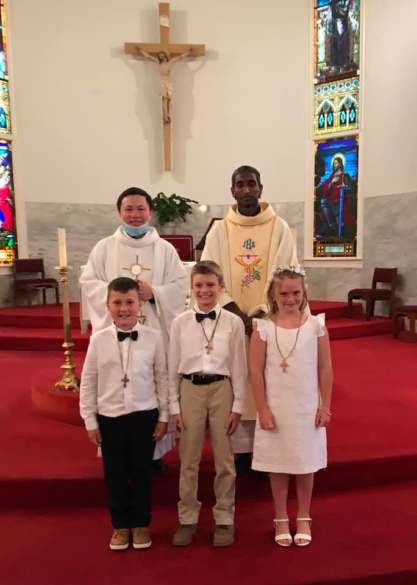
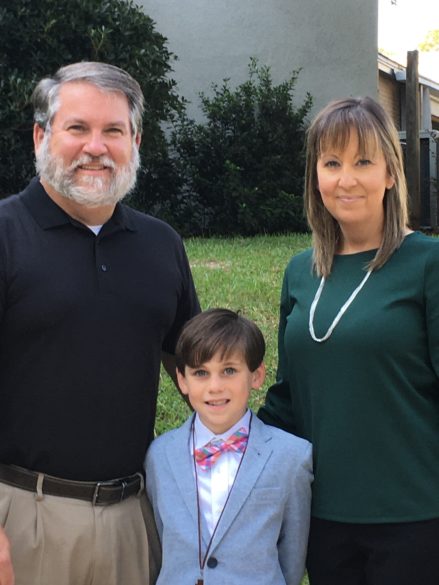
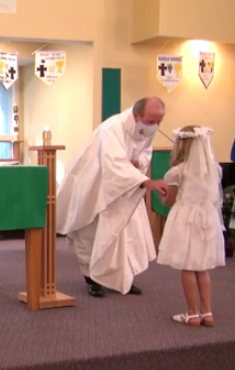
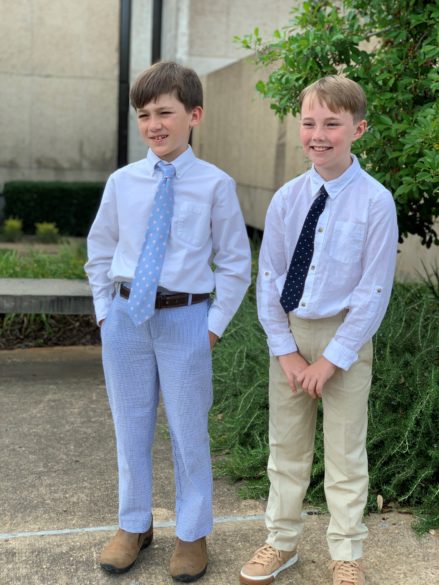
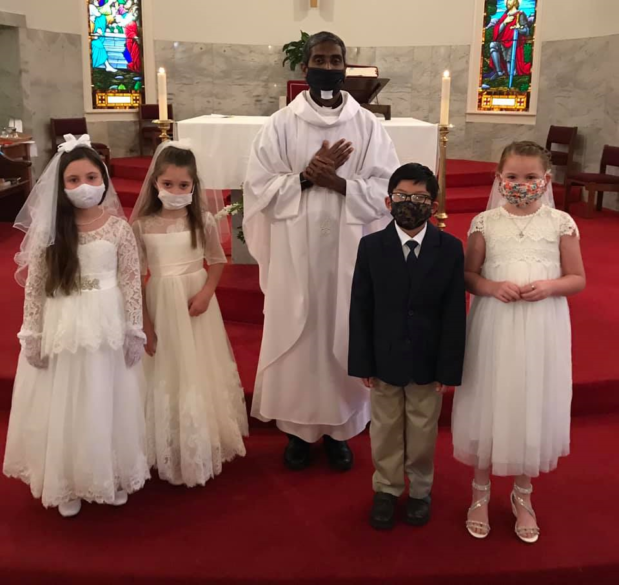
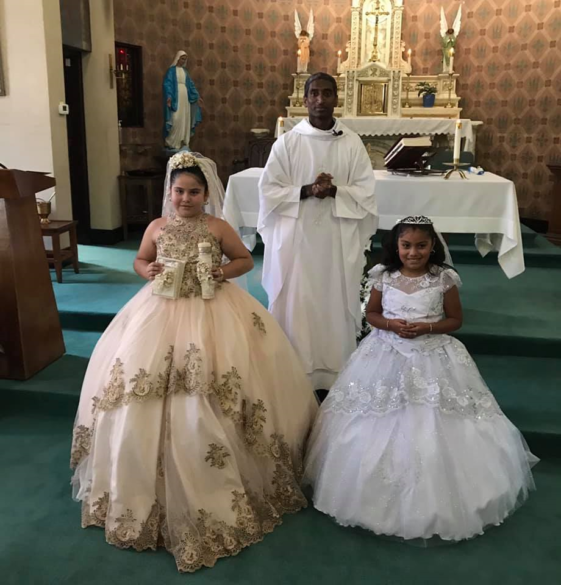
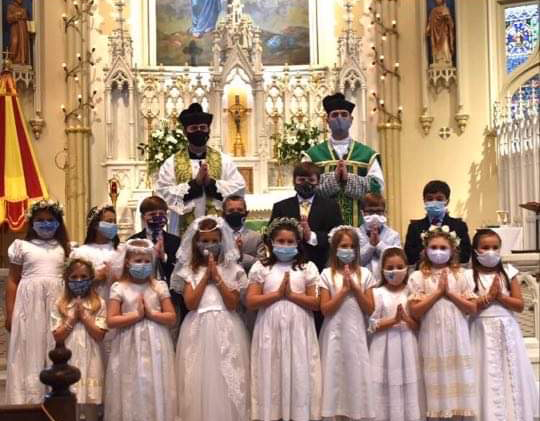
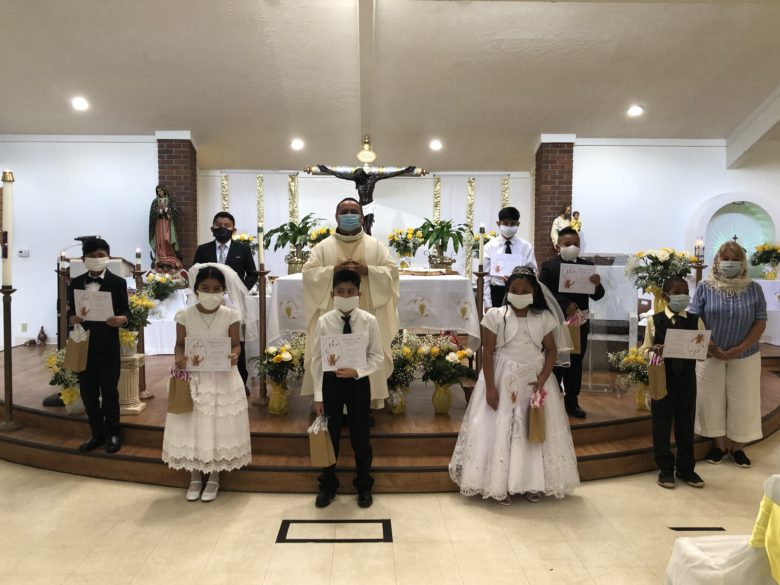
Amber Salvador, Alan Modesto, Casandra Lopez, JaDavis L. Rayveon and Lou Joyner (catechist). Back row (l-r): Poedro Lopez, Father Odel Medina S.T., Enmanuel Modesto and Yens Snyder Lopez. (Photo courtesy of Father Odel Medina)
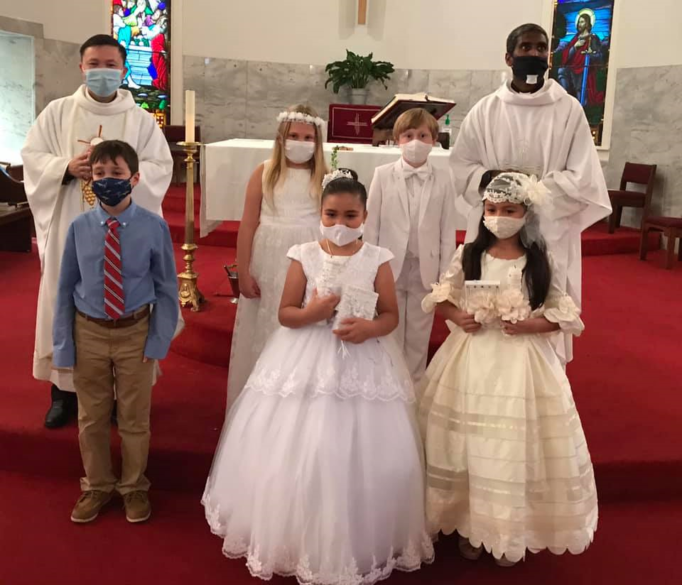
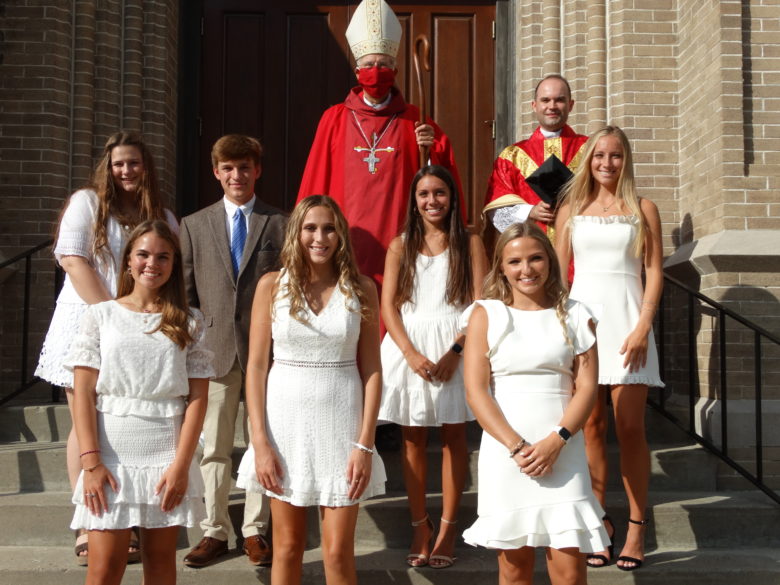
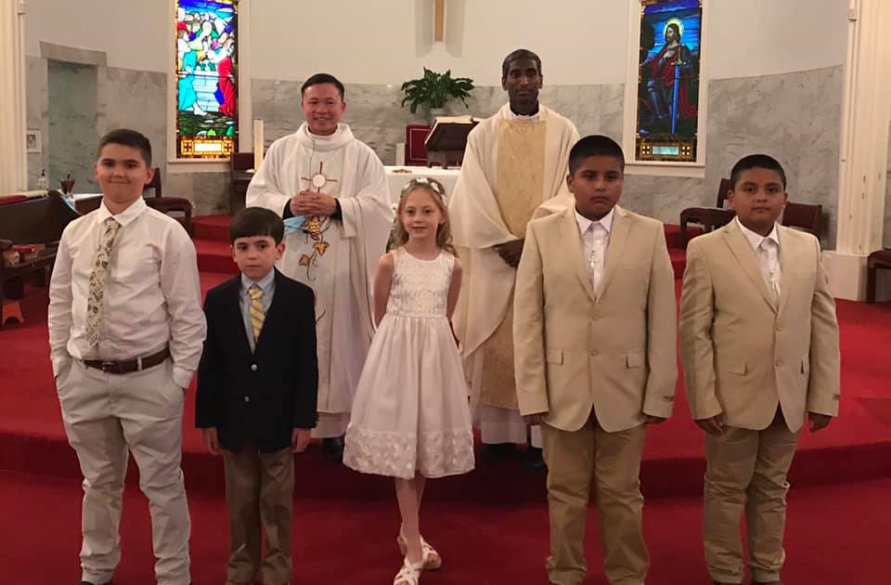
Back 2 School
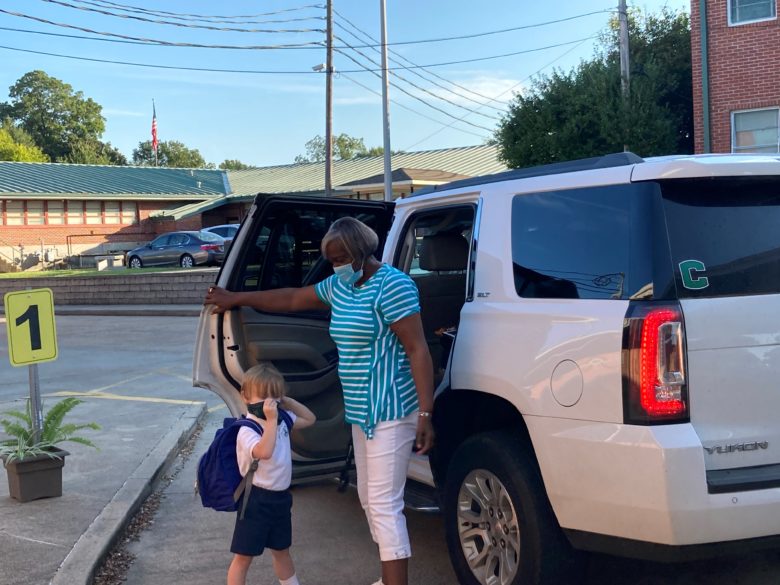
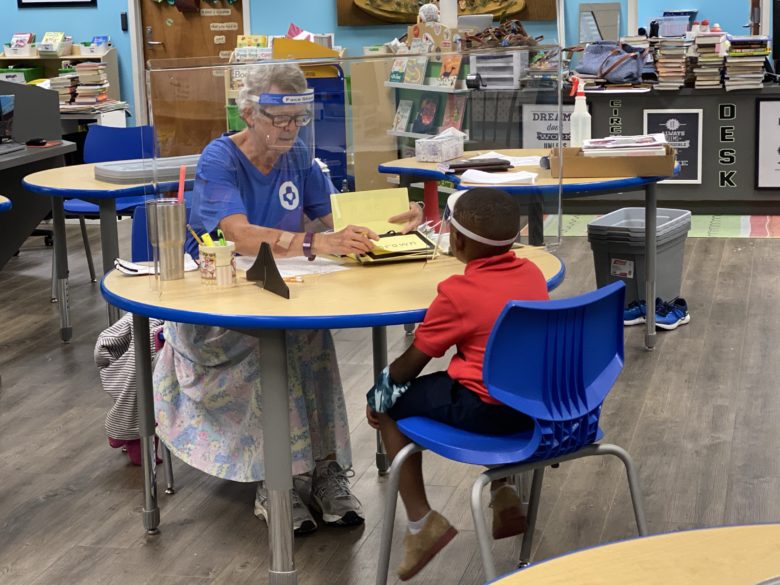
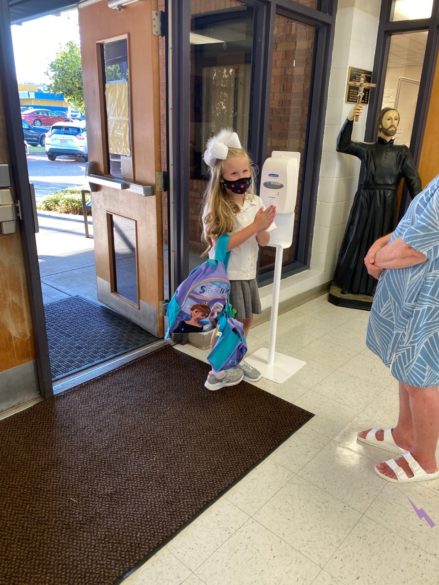
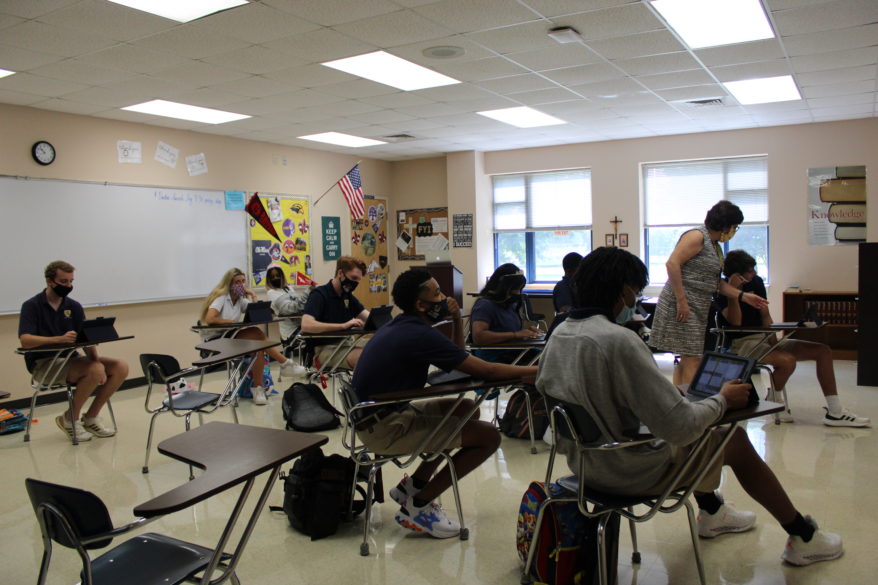
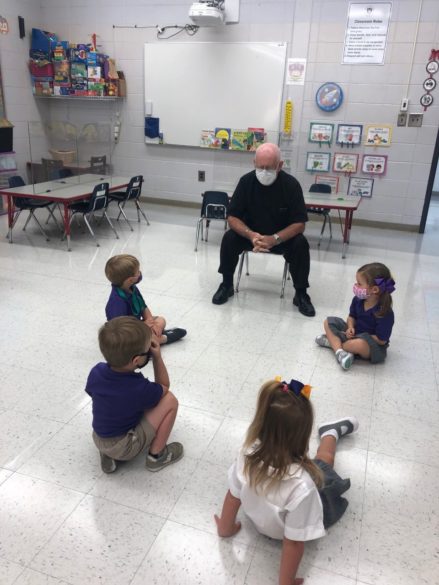
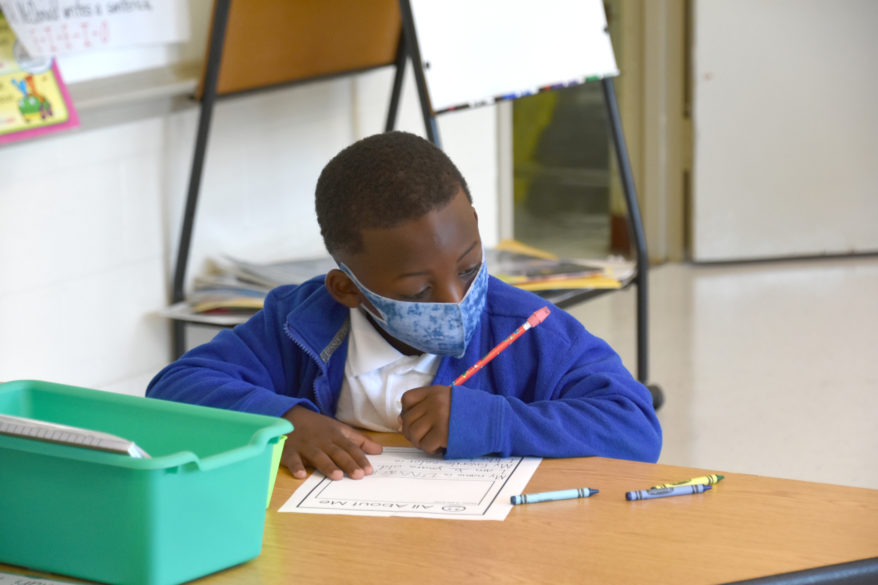
(second photo) Left to right are PE teacher Whitney Meyers, parent Caysi Seely, K-5 assistant Nancy Flowers, second grade teacher Andrea Farris at the lemonade supply drop-off event.
(Photos by Mary Evelyn Stonestreet)
